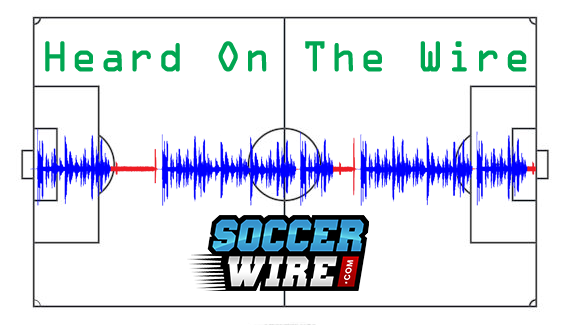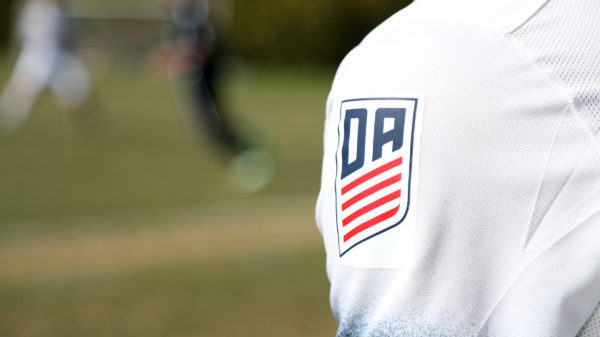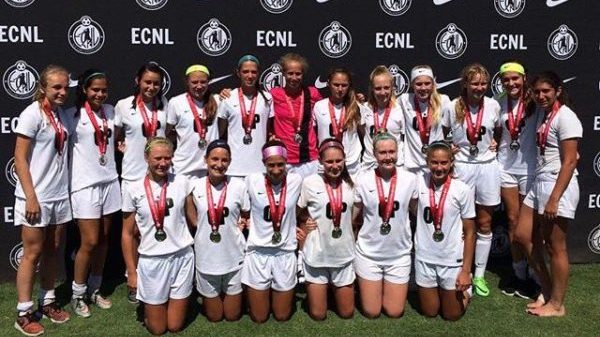VDA to follow Loudoun to ECNL as youth soccer chess game rumbles on
 WASHINGTON – The geopolitical shadowboxing between two of the largest national youth soccer leagues in the United States continues to smolder, and the D.C.-Maryland-Virginia region has lately become a major battleground.
WASHINGTON – The geopolitical shadowboxing between two of the largest national youth soccer leagues in the United States continues to smolder, and the D.C.-Maryland-Virginia region has lately become a major battleground.
As U.S. Soccer’s Girls Development Academy moves towards the conclusion of its first season of play, its incumbent competitor the Elite Clubs National League has adopted a tenaciously combative posture, determined to keep hold of its current members, win the chase for new ones and even peel off Girls DA member clubs where possible.
This week Northern Virginia giant Loudoun Soccer announced its entry into the ECNL effective at the start of the new season this fall, a notable recruit based in one of the wealthiest and fastest-growing communities in the country. One source told SoccerWire.com that Loudoun was also offered a slot in the Girls DA, but declined.
Another shoe is expected to drop in the coming days, and it might turn a few more heads. Multiple sources have confirmed that the Virginia Development Academy – born as a partnership between the Prince William Soccer, Inc., Virginia Soccer Association and Chantilly Youth Association to field a boys Development Academy program in 2014 – is set to move its top girls programming from Girls DA to ECNL. It’s the latest arrival in the latter league’s sustained push to grow its membership nationwide.
[+Loudoun Soccer joins Girls ECNL for 2018-2019 season ]
That may have influenced another piece swinging into motion in the other direction: The Girls DA is expected to release its updated membership list any time now, and while a few clubs have had their membership revoked, others will be welcomed in. We’ve been told that the Arlington Soccer Association will be the most notable DMV-area newcomer to the Development Academy’s girls side, though only in the younger age groups at first, rather than full membership.
In one sense this hopscotching is not new, but a chess game that’s been unfolding since the Girls DA’s birth. Major clubs have moved in both directions, and in many cases smaller ones have leaped to vacate the spaces left behind. But it also suggests that the rivalry between the leagues is real, and more balanced than some would have expected.

Many observers have predicted for some time that the federation’s institutional strength will be too much for the ECNL to overcome, thus making it a matter of time before the Girls DA attains a clear advantage in terms of quality of play and talent recruitment.
Yet the ECNL and its members are making clear that they won’t concede the high ground without a fight. They feel they can provide a better membership experience, and an equal or better developmental path, even with the federation’s substantial resources being mobilized on the Girls DA. In some cases that case is being made vocally and forcefully in “information sessions” for parents whose flight to other programs is feared.
In this regard the federation’s “no-high-school rule” has worked to the ECNL’s advantage, even with the wider leeway that’s been extended on the girls side compared to the relatively strict national enforcement for boys since 2012. High-school soccer has proved hard to give up for even some elite girls players, and many parents and coaches alike chafe at the detached, top-down mentality of the federation that they believe it symbolizes.
[+Games & Thrones: ECNL vs. Girls DA cold war rages ]
“There wasn’t a singular factor. We just feel ECNL meets the needs and culture of our organization,” said one source at a club that’s picked the ECNL over the Girls DA. “It took the boys a decade to get where they are. They tried to replicate that with the girls and change the culture in a couple months.
“We don’t have anything negative to say about the Girls DA or its leadership. We just didn’t think it was best for our kids based on the feedback we were receiving from our membership.”
In places where high-school play is valued, the situation is an opening for the ECNL to assert that it can provide a comparable experience with fewer mandates and restrictions. The recent election of a new federation president, Carlos Cordeiro, has also fuelled hopes of driving change in or around the Girls DA.
The newer league can play the powerful trump card, however: as the federation’s own competition and chosen pathway, it can claim to be the best place to be scouted and groomed for national-team selection by U.S. Soccer staff.
 Some feel that hand hasn’t been played aggressively enough. The federation touts its platform and notes in official roster releases how many of the youth national teamers are being identified in the Girls DA, but has yet to ruthlessly and explicitly cut out ECNL-based players. (Though yes, we have heard the accusations of players being pressured to switch to clubs in the fed’s league … and vice versa.)
Some feel that hand hasn’t been played aggressively enough. The federation touts its platform and notes in official roster releases how many of the youth national teamers are being identified in the Girls DA, but has yet to ruthlessly and explicitly cut out ECNL-based players. (Though yes, we have heard the accusations of players being pressured to switch to clubs in the fed’s league … and vice versa.)
Perhaps the federation’s staff is hesitant to incur the backlash that would provoke, or simply confident in their long-term superiority and thus able to bide their time. For now, that’s left the market muddled and talent diluted across two national competition platforms – to say nothing of US Youth Soccer’s National League, a fairly high level of play but not as lengthy or immersive as the Girls DA or ECNL – where previously there was one.
So youth soccer’s Cold War will drag on for at least a few years to come.
SOCCERWIRE MARKETPLACE
- Wanted Licensed Youth Soccer Coach
- Join Official Elite Summer Soccer Camps with Europe’s Top Pro Clubs!
- The St. James FC Travel Staff Coach - North (Loudoun) & South (Fairfax)
- The St. James FC Girls Academy (GA) Head Coach - 2 teams
- The St James FC Boys Travel Tryouts
- OFFICIAL BAYERN MUNICH SUMMER CAMPS U.S.
- JOIN THE ALLIANCE!
- OFFICIAL FC BARCELONA CAMPS U.S.
- The Cup San Diego - Hosted by Legends FC
- Players Wanted - Undergraduate or Post-graduate











